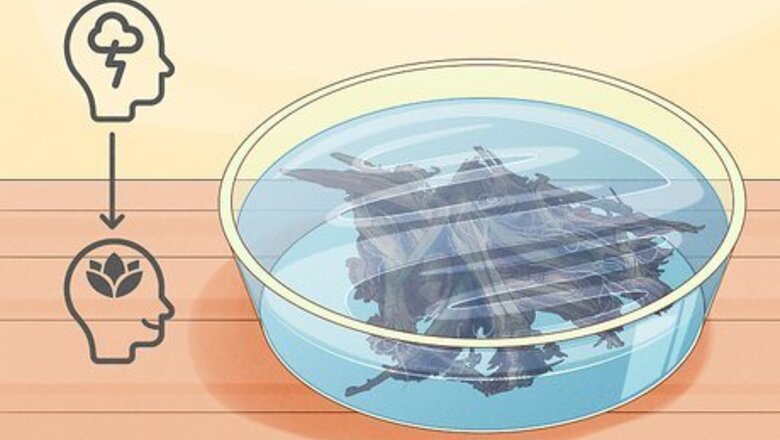
views
Note: Mimosa is a genus that includes many plants. If you're interested in DMT extraction, that plant is Mimosa tenuiflora (aka Mimosa hostilis). Mimosa tree bark doesn't contain DMT.
- To harvest the bark, cut off pencil-sized shoots or branches with sharp pruners.
- Run a sharp paring knife down the length of each limb or shoot to scrape off strips of bark. Cut the strips into 1 in (2.5 cm) pieces and air-dry them.
- Mimosa bark is a traditional Chinese herbal remedy. It's medicinal uses include the treatment of insomnia, depression, and anxiety.
What is mimosa bark used for?
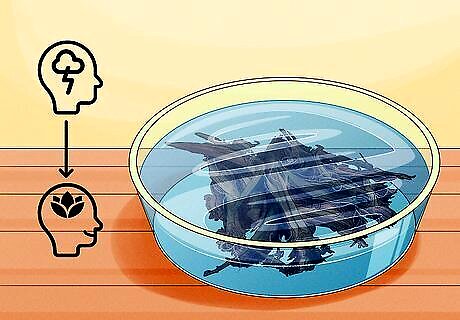
Mimosa bark is used medicinally to treat depression and anxiety. Mimosa bark is a traditional Chinese herbal medicine that people have been using for centuries. The Chinese refer to the mimosa tree as the "tree of happiness" and they call the bark "he huan pi," which means "collective happiness bark." The bark is believed to harmonize emotions, reduce pain, induce calm, ease insomnia, and foster a relaxed and happy state of mind. Mimosa bark is typically administered through homemade teas and tinctures. It's also available as a commercial dietary supplement. The first written documentation of mimosa’s medicinal properties appeared in 200 AD in a compilation of Chinese oral medicinal traditions called The Divine Farmer’s Materia Medica (or Shen Nong Ben Cao Jing).
How to Harvest Mimosa Bark
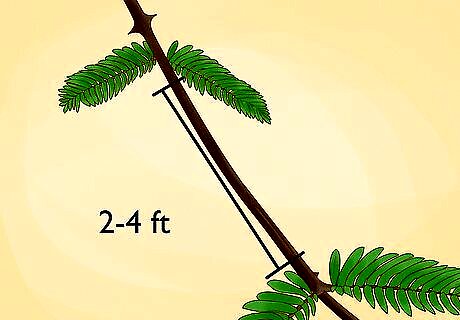
Cut off pencil-sized shoots or branches with a sharp knife or pruners. Choose healthy-looking shoots or small branches that are 2 to 4 ft (0.61 to 1.22 m) long since they're the easiest to handle. Cut the shoots or limbs as close to the tree trunk as possible. Only source what you need from the tree; removing too much at one time can damage it. Feel free to harvest the bark year-round, but winter and spring are ideal so the tree has a chance to resprout. If small shoots or limbs have recently to the ground, you can use those, too.
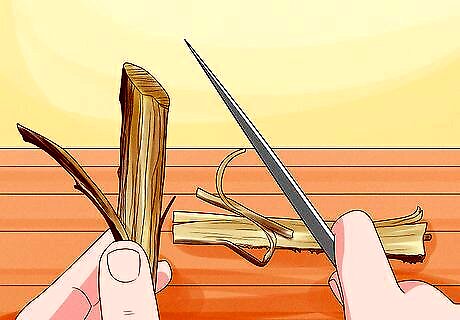
Use a sharp paring knife to scrape strips of bark off the limbs. Brush off any dirt and strip off the leaves. Run your knife blade against the surface of each limb, peeling it almost the same way as you’d peel a potato, so the bark comes away in small, thin strips. Work your way down the length of each piece.
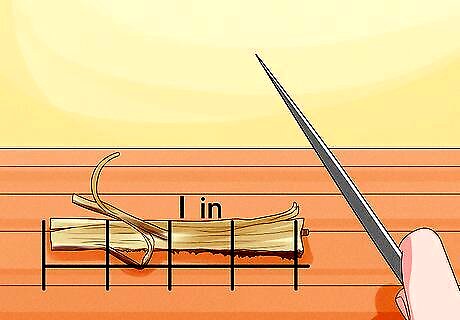
Cut strips into 1 in (2.5 cm) pieces and let them air-dry. Smaller pieces of bark are easier to work with and easier to store, so go ahead and chop the strips up. Then, scatter the pieces on a clean towel in a cool, dark space so they can dry out completely. The bark is fully dry when it feels crisp and snaps into pieces when you bend it (it should have no flexibility whatsoever). Drying usually takes a couple of days. To speed up process a bit, scatter the bark pieces in direct sunlight. Put the dried bark in an airtight container and store it in a cool, dry place. Dried bark will keep indefinitely.
Preparing Dried Mimosa Bark
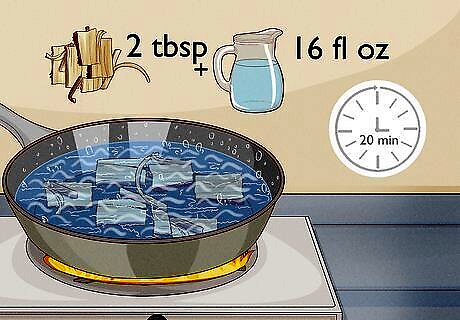
Mimosa bark tea Pour 2 tbsp (30 g) of dried mimosa bark into a large pot and add 16 fl oz (473 ml) of water. Bring the mixture to a boil over high heat. Then, reduce the heat to medium and simmer the mixture for 20 minutes. Strain the bark pieces out of the liquid and enjoy the tea warm. For extra sweetness, stir in a small amount of raw local honey. Dosage: this recipe makes 2 doses. Stick with 1 dose per day (so divide the recipe in half if you're only dosing yourself). Mimosa bark tea is pretty sour by itself, but the honey definitely helps. To alter the flavor even more, steep the bark with a pinch of licorice or schizandra berries (just be sure to strain them out along with the bark).
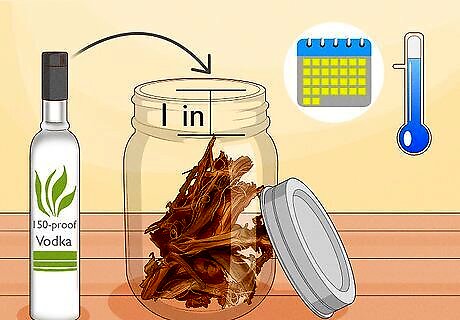
Mimosa bark tincture Fill a mason jar with the dried root bark; leave about 1 in (2.5 cm) of free space at the top. Cover the bark with 150-proof vodka or Everclear (any grain alcohol that’s at least 75% alcohol works). Screw the lid on the jar and store it in a cool, dark place for about a month. Then, strain the bark out and store the liquid in a glass bottle with a dropper. Dosage: take 3-20 drops of the tincture per dose. Go with 1-3 doses per day. Mimosa bark is well-tolerated and traditional Chinese literature doesn’t mention any warnings. That said, some western herbalists believe the tincture may cause people with mood disorders to go into a manic state. If you have bipolar disorder (or any other type of mood disorder), talk to your doctor first.
How to Harvest and Use Mimosa Flowers
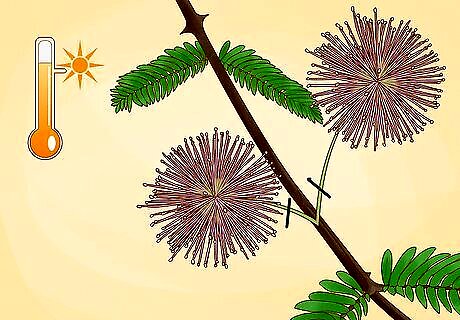
Harvest mimosa blooms on a warm and sunny day. Mimosa trees are usually bursting with pink, fluffy blooms throughout the spring and early summer. For the most fragrant flowers, wait to harvest until the sun is high overhead so the morning dew has a chance to dry completely. Medicinally, mimosa flowers are used in teas and tinctures. They can help elevate your mood, act as a mild sedative, and soothe an upset stomach.

Pinch fully-opened blossoms right off the tree with your fingers. Take off just the blooms or pinch off the delicate green stems along with the blooms. Flowers that are fully open are the best for medicinal purposes (this is also when the blooms are most fragrant). Mimosa trees bloom abundantly, so feel free to go back and harvest more flowers from the same tree every few days.

Lay fresh blooms out to dry before storing them in airtight containers. To store the blossoms long-term for mimosa flower tea, air-dry the petals first. Just scatter the blooms on paper towels in a place where they don't be disturbed and leave them for a week or so. Once the petals are crispy, transfer them to airtight containers. To brew mimosa flower tea: Pour 12 oz (354 ml) of boiled water over 1 tbsp (15 g) of dried flowers in a sturdy mug. Cover the mug and steep the tea for 5-10 minutes. Strain out the solids and enjoy the tea warm with a little honey.
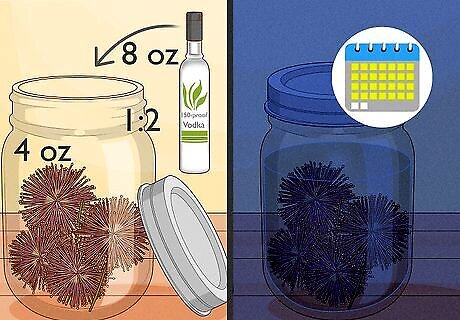
Alternatively, make a mimosa flower tincture with fresh blooms. Weigh your mimosa flowers in ounces with a digital scale. Transfer them to a glass jar and pour 80-proof vodka over them in a 1:2 ratio (so if you have 4 oz of flowers, add 8 oz of vodka). Secure the lid and steep the flowers for 4-6 weeks in a cool, dark place. Try to shake up the jar every few days as the blooms are steeping. Strain the solids out with a cheesecloth or metal strainer, then store the liquid in a glass dropper bottle. Dosage: 40-80 drops, up to 3 times per day.



















Comments
0 comment